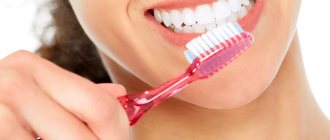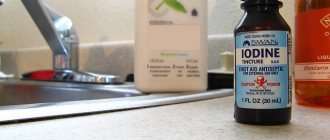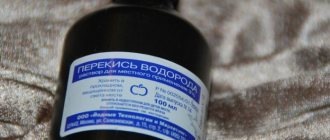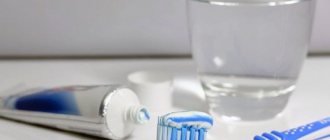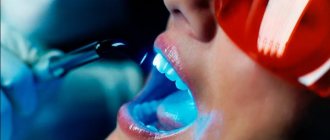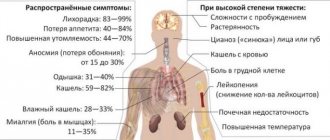Sputum during pneumonia is a phenomenon that people encounter regardless of age. It is worth noting that it is by the color of the pathogenic discharge that you can find out at what stage the disease is and whether there are any associated pathologies. Pneumonia is a serious illness that requires mandatory treatment. If this is absent, the consequences are dire. Let us consider further what the color of the discharge means, how it is examined, as well as what are the symptoms and treatment of pneumonia in adult patients.
Description
Pneumonia can occur on its own extremely rarely. Usually this disease is a consequence of various chronic ailments that are associated with the respiratory system. According to the classification, pneumonia occurs:
- Viral. In this case, the disease is caused by certain viruses.
- Mixed. In this case, the disease is caused by several pathogens at once.
- Development of fungal pneumonia.
What to do if sputum does not come out during pneumonia? Sometimes it happens that due to illness, the mucus does not come away. In this case, you need to consult a doctor as soon as possible for a diagnostic examination.
In fact, with pneumonia, the phenomenon of sputum is one of the most important symptoms. The first thing doctors pay attention to is the color of the pathogenic discharge. For example, if there is blood in the sputum discharge during pneumonia, this indicates that the person has additional diseases that require immediate treatment.
Any mucus secreted is pathological. It usually starts with the nose, and then the process moves to the lungs, and after that the person develops a cough.
Sputum analysis for pneumonia is performed very often.
Next, we will find out what symptoms accompany pneumonia in adult patients.
Uncharacteristic sources of foamy discharge
A cough with foam in an adult can be an indicator of the body about a sharp deterioration in the condition of the heart and blood vessels. It is believed that the appearance of chest spasms in the morning without fever is a sign of diseases of the coronary system. In this case, it is necessary to immediately undergo diagnostics in the clinic (consultation with a cardiologist, arrhythmologist).
Another common source of white sputum is gastroesophageal reflux disease of the gastrointestinal tract. With this disease, acid from the intestines enters the respiratory tract, causing reflex contractions of the chest and provoking a paroxysmal cough. Intoxication can be added to this group of reasons. Foamy mucus occurs when poisoned by narcotic substances, chemical vapors, or heavy metals.
You need to know that coughing with foam in adults is often a consequence of excessive use of nasal sprays.
White sputum without fever may indicate age-related deterioration in health. Weakening the functions of the circulatory system leads to mucus stagnating in the bronchi, which subsequently turns white and comes out in lumps.
Symptoms of pneumonia
Sputum from pneumonia can be any color. It comes in transparent and black. It may also contain a large amount of substances, and in addition, cell breakdown products along with blood particles and various microorganisms. We can safely say that the color of sputum depends on the nature of the disease. Should sputum be released during pneumonia? There is no clear answer. In some situations, the disease goes away without this symptom, and then it becomes more difficult to determine the pathology, since the doctor cannot take tests for the physical properties of sputum.
The symptoms and treatment of pneumonia in adults are interrelated.
Typical manifestations of this disease are the following symptoms:
- Presence of sputum.
- The appearance of a cough.
- The occurrence of fever or hyperhidrosis.
- The appearance of pain in the chest area.
- Rapid breathing rhythm.
- Irritability, drowsiness and lack of appetite.
- Symptoms of respiratory failure.
- Severe malaise.
To make an accurate diagnosis, the patient must undergo a sputum test. Based on the information received, the doctor can prescribe treatment that will be effective and will help get rid of this problem.
Next, let's move on to the classification of secretions and find out what sputum is like for pneumonia and other respiratory diseases.
Baby is foaming at the mouth
Whatever your occupation, you probably don't like getting up early: they...
Essential oils have a subtle nature. In their book Aromatherapy, therapists...
Imagine a spring at rest and motionless. Her potential...
“The boss will definitely fire me,” “my wife is disappointed in me,” “the doctor won’t confirm...
You can believe the mental judgment that I am not the body, not the thoughts, and not the emotions. But this…
Once upon a time the whole earth was deserted, and God, flying over it, sprayed from his...
Whoever you are, man or woman, and whatever your age, love you...
Luck and financial success come first for most people. Exists…
One day they asked me: “Why do you run?” I immediately replied: “It’s like...
Anyone who suffers from some kind of illness or injury has probably at least once...
There are many unique human abilities. An important place among them...
Nobody likes change, but we can grow, develop and expand our horizons...
www.sunhome.ru
Febrile seizures in children. What to do?
My daughter had seizures at two in the morning, I woke up from strange sounds that she began to make. She ran up to the crib and took her in her arms, and her daughter went limp and began to hiccup frequently, her eyes were half-closed...
We called an ambulance, the car arrived 15 minutes later, the daughter had already come to her senses and started screaming. The ambulance doctor couldn’t determine for about 10 minutes what caused the attack, then, having given the girl an antipyretic injection and telling us the diagnosis of “angina,” she told me to get ready for the hospital...
Arriving at the hospital, I sat there in the waiting room with my daughter in my arms for almost 2 hours, waiting for us to finally be processed.
After examining the daughter, the doctor began to fill out some papers, saying that there were no places in the room, and they would put us in the corridor. This was the last straw - I said that we would not stay in the hospital and would go home. Then the doctor began to frighten me that there might be repeated attacks, etc.
I decided to stay. But, having climbed to the desired floor and approached the duty nurse’s desk, I regretted my decision. The nurse reluctantly got up from the couch on which she was sleeping, said through clenched teeth: “Why are you all sick at night,” and began to register us again.
However, her phrase “I won’t do any procedures for you until the morning!” completely finished me off. What was the point of staying in the hospital if nothing was going to be done for us? I literally ran away from there.
I wrote a receipt that I refused treatment for my daughter and took a taxi home.
My daughter was constantly trembling all this time, but the temperature had already begun to subside - the injection given by the emergency doctor was working. At home, I called our local pediatrician. She came, examined the girl and said that she did not have any sore throat, just a cold. She prescribed medications... And if we had stayed in the hospital, it is not yet known what we would have caught there, since the department was infectious...
At the hospital we were diagnosed with febrile seizures. Since I heard this concept for the first time, I decided to find out on the Internet what it is. I am sharing this information with you.
As a rule, febrile seizures occur in children aged 6 months to 5-7 years. They occur against the background of a very rapid increase in body temperature. They occur without any warning signs; their main cause is a sharp jump in temperature from normal (36.6°C) to 40−41°C.
During febrile convulsions, the baby may begin to hiccup rapidly, his eyes may be wide open, and his gaze may be “glassy.” Sometimes the eyes roll up, the child does not react to others, loss of consciousness is possible, the body becomes limp.
Febrile seizures can last from 5 to 15 minutes. As soon as they stop, the baby comes to his senses and may even cry. Since cramps occur due to high temperature, it is likely that the child will shiver and his arms and legs will become cold. In this case, you need to put socks on the baby and take him in your arms, wrapping him in a warm diaper.
You can also call an ambulance - doctors will give you an antipyretic injection, since conventional medications may not work at high temperatures (over 39.5°C).
How to prevent (prevent) the onset of febrile seizures? Watch the baby - if the child is not feeling well, he usually is not interested in toys, turns away from food, is capricious... Take the baby's temperature. If the thermometer shows over 37.5°C, give an antipyretic or call a pediatrician.
Teething, stomatitis, colds and much more - all this can cause a sharp rise in temperature in children. Therefore, do not let everything take its course, and at the first signs of illness in your child, try to take measures to eliminate them.
shkolazhizni.ru
Foaming from the mouth of a newborn
A newborn is considered a child from birth until four weeks of life. There are full-term, premature and post-term newborns. Often, full-term babies are physiologically and morphologically prepared directly for extrauterine life - they actively suckle the breast, are active in themselves, scream loudly, with normal weight and height.
Even despite constant medical supervision, the baby’s health is largely in the hands of the parents. Therefore, they should know, for example, what to do if a newborn is foaming at the mouth and so on.
At the same time, it is advisable to stock up the dowry - a bath, linen, a stroller, a table and other care items in advance. The crib should be installed in a bright place, away from windows and doors and not in a draft.
Therefore, I would like to talk a little about the features of physiology and anatomy that are inherent in newborns, the symptoms of the most common ailments of the baby.
The first and main symptom is respiratory failure. The very severity of shortness of breath itself begins to intensify during the first 2-3 days of the child’s life. The number of respirations begins to increase to 120 or more per minute, and periods of apnea occur for up to 15 seconds.
The newborn immediately begins to foam at the mouth. Decreased breathing is heard in the lungs, followed by wet and dry fine rales. Cyanosis of the mucous membrane and skin begins to intensify.
It is worth knowing that the Silverman scale is generally accepted for assessing the severity of respiratory distress in newborns. At the same time, as SDR progresses, intravascular disseminated coagulation syndrome and shock begin to develop.
The diagnosis of SDR today is made primarily on the basis of such criteria as radiological confirmation, clinical characteristic picture and laboratory data.
X-rays reveal such characteristic symptoms as diffuse foci of decreased transparency, a type of “ground glass”, diffuse reticulation of the pulmonary pattern itself, and an air bronchogram.
In addition, it is possible that the child’s lung volume decreases, as well as an increase in the size of the heart.
At the same time, the occurrence of the above radiological signs during the first 8 hours of a newborn’s life is considered pathognomonic for SDR.
In this case, the studied fluids are amniotic fluid, aspirate of tracheal nasopharyngeal fluids, and aspirate of the entire contents of the stomach immediately at birth.
simptomy-vs-treatment.ru
Foaming from the mouth in humans: causes and treatment
Foam at the mouth is a pathological symptom that occurs against the background of disturbances in the functioning of various organs and tissues. Foamy discharge is dangerous because it reduces the respiratory surface of the alveoli, can block the entrance to the airways and lead to human death.
Causes
In order to understand why foam comes from the mouth, you need to know the reasons for its occurrence:
- Convulsive seizures due to poisoning by poisons, drugs and drugs.
- An attack of heart pain during myocardial infarction, uncontrollable angina, resulting in cardiogenic shock, which, if assistance is not provided, leads to the death of the patient.
- Cardiac asthma with massive atherosclerotic lesions of the main blood vessels, malformations of the heart, diseases of the valve structures.
- Acute cerebrovascular accident as a result of hypoxia due to atherosclerosis or hemorrhage due to an aneurysm, weakness of the vascular wall.
- Epilepsy due to dissonance in the functioning of nerve cells in the brain.
- Traumatic brain injuries.
- Tumors and metastases in the brain, compressing the structures of the organ.
- Infectious lesions of the brain and its membranes.
- Complications of diabetes mellitus are hyper- and hypoglycemic coma.
- Anaphylactic shock.
- Withdrawal syndrome during alcohol abstinence.
- Sudden arrest of cardiac and respiratory function.
Any of these reasons, if pre-medical and qualified assistance from a doctor is not provided, leads to severe disruptions in the functioning of the organs of the human body and even death.
IHD
Coronary heart disease is one of the most common diseases of people over 50 years of age, most often affecting the male half of the population.
The narrowing of the lumen of the vascular wall leads to a weakening of blood circulation in the tissues adjacent to this blood vessel, hypoxia of the area and ischemia occurs, leading to the death of cardiomyocytes.
Symptoms of angina pectoris appear, and then myocardial infarction may develop.
The consequence of this process is acute heart failure and the development of pulmonary edema. The patient takes a forced position of the body - sitting or leaning on a bed or table. Shallow, noisy breathing can be heard from a distance, and a hacking cough with foam coming out of the mouth is disturbing. Further, a cardiogenic shock state and clinical death may develop.
First aid in this case consists of taking Nitroglycerin under the tongue and Aspirin tablets, which must be chewed. For arrhythmia - Valocordin. You should definitely call an ambulance.
If assistance is not provided or treatment is ineffective, biological death occurs.
Epilepsy
An epileptic seizure most often occurs suddenly, but some people feel a special state called an aura before the onset of loss of consciousness. Before an attack, a person may hear unusual smells and sounds. In this case, you can warn the accompanying person.
During an attack, there is intense contraction of the entire muscle group and foamy discharge from the mouth.
If an epileptic attack occurs on the street, it is advisable to:
- Catch the falling person, lay him on the surface of the soil, and place a cushion under his neck. The roller can be made from available materials - a jacket, a bag.
- Turn on your side and hold your head in this position to avoid injury and swallowing of your tongue. There is no need to unclench your teeth.
- If foam comes out of the mouth, carefully wipe it with a handkerchief so that the person does not swallow it, otherwise asphyxia may develop. The foam is white and may be mixed with blood if the tongue or inner surface of the cheek is bitten.
Epileptic seizures can occur with stroke (stroke), traumatic brain injury, tumor growths and metastases, infectious lesions of the brain and its membranes.
Diabetes
Diabetes mellitus is an endocrine disease and is divided into types 1 and 2.
At the same time, people suffering from this disease must take insulin injections or take glucose-lowering pills for life.
In case of non-compliance with diet, medical prescriptions, or intense physical activity, hypo- or hyperglycemic states may occur. As a result, coma develops.
Hypoglycemia occurs suddenly with loss of consciousness, the appearance of cold and sticky sweat, noisy breathing, tremors of the arms and legs, and convulsions may occur. First aid is mandatory. You need to give a warm sweet drink, candy, a piece of refined sugar, and warm the limbs. It is also mandatory to call an ambulance.
Hyperglycemia develops gradually with the appearance of headache, weakness, nausea, vomiting, dry skin and oral mucosa.
The smell of acetone is characteristic (it is sometimes confused with the aroma of alcohol; a passerby may think that a person is drunk when passing by a dying person on the sidewalk).
If an individual is found in this condition, it is necessary to call an ambulance team, then, if possible, take the person into the shade and unbutton the top buttons of his clothing. Free the oral cavity from vomit and foamy secretions.
Gray sputum
Gray (white) sputum is a common occurrence for every person, since it can be released even in the absence of any diseases. But sometimes, if departments are observed in large numbers, they may indicate the presence of the following diseases:
- Presence of respiratory tract infections.
- Development of chronic bronchitis.
- Sputum may occur during the use of nasal drops.
- In case of allergic reactions, such sputum may also be released.
If a person smokes or lives in an environmentally unfavorable environment, then with a cough he may produce gray mucus.
How else does sputum discharge occur during pneumonia?
Why does a person foam at the mouth?
Foam at the mouth is a pathological symptom that occurs against the background of disturbances in the functioning of various organs and tissues.
Foamy discharge is dangerous because it reduces the respiratory surface of the alveoli, can block the entrance to the airways and lead to human death. In order to understand why foam comes from the mouth, you need to know the reasons for its occurrence:
- Convulsive seizures due to poisoning by poisons, drugs and drugs.
- An attack of heart pain during myocardial infarction, uncontrollable angina, resulting in cardiogenic shock, which, if assistance is not provided, leads to the death of the patient.
- Cardiac asthma with massive atherosclerotic lesions of the main blood vessels, malformations of the heart, diseases of the valve structures.
- Acute cerebrovascular accident as a result of hypoxia due to atherosclerosis or hemorrhage due to an aneurysm, weakness of the vascular wall.
- Epilepsy due to dissonance in the functioning of nerve cells in the brain.
- Traumatic brain injuries.
- Tumors and metastases in the brain, compressing the structures of the organ.
- Infectious lesions of the brain and its membranes.
- Complications of diabetes mellitus are hyper- and hypoglycemic coma.
- Anaphylactic shock.
- Withdrawal syndrome during alcohol abstinence.
- Sudden arrest of cardiac and respiratory function.
Any of these reasons, if pre-medical and qualified assistance from a doctor is not provided, leads to severe disruptions in the functioning of the organs of the human body and even death.
Coronary heart disease is one of the most common diseases of people over 50 years of age, most often affecting the male half of the population. The narrowing of the lumen of the vascular wall leads to a weakening of blood circulation in the tissues adjacent to this blood vessel, hypoxia of the area and ischemia occur, leading to the death of cardiomyocytes. Symptoms of angina pectoris appear, and then myocardial infarction may develop.
The consequence of this process is acute heart failure and the development of pulmonary edema. The patient takes a forced position of the body - sitting or leaning on a bed or table. Shallow, noisy breathing can be heard from a distance, and a hacking cough with foam coming out of the mouth is disturbing. Further, a cardiogenic shock state and clinical death may develop.
First aid in this case consists of taking Nitroglycerin under the tongue and Aspirin tablets, which must be chewed. For arrhythmia - Valocordin. You should definitely call an ambulance.
If assistance is not provided or treatment is ineffective, biological death occurs.
An epileptic seizure most often occurs suddenly, but some people feel a special state called an aura before the onset of loss of consciousness. Before an attack, a person may hear unusual smells and sounds. In this case, you can warn the accompanying person.
During an attack, there is intense contraction of the entire muscle group and foamy discharge from the mouth.
If an epileptic attack occurs on the street, it is advisable to:
- Catch the falling person, lay him on the surface of the soil, and place a cushion under his neck. The roller can be made from available materials - a jacket, a bag.
- Turn on your side and hold your head in this position to avoid injury and swallowing of your tongue. There is no need to unclench your teeth.
- If foam comes out of the mouth, carefully wipe it with a handkerchief so that the person does not swallow it, otherwise asphyxia may develop. The foam is white and may be mixed with blood if the tongue or inner surface of the cheek is bitten.
Epileptic seizures can occur with stroke (stroke), traumatic brain injury, tumor growths and metastases, infectious lesions of the brain and its membranes.
Diabetes
Diabetes mellitus is an endocrine disease and is divided into types 1 and 2. At the same time, people suffering from this disease must take insulin injections or take glucose-lowering pills for life. In case of non-compliance with diet, medical prescriptions, or intense physical activity, hypo- or hyperglycemic states may occur. As a result, coma develops.
Hypoglycemia occurs suddenly with loss of consciousness, the appearance of cold and sticky sweat, noisy breathing, tremors of the arms and legs, and convulsions may occur. First aid is mandatory. You need to give a warm sweet drink, candy, a piece of refined sugar, and warm the limbs. It is also mandatory to call an ambulance.
Hyperglycemia develops gradually with the appearance of headache, weakness, nausea, vomiting, dry skin and oral mucosa. The smell of acetone is characteristic (it is sometimes confused with the aroma of alcohol; a passerby may think that a person is drunk when passing by a dying person on the sidewalk). If an individual is found in this condition, it is necessary to call an ambulance team, then, if possible, take the person into the shade and unbutton the top buttons of his clothing. Free the oral cavity from vomit and foamy secretions.
Anaphylactic shock occurs against the background of penetration of an antigen into the body, a chain of biochemical reactions develops, leading to circulatory failure and changes in the process of gas exchange in tissues. Antigens can be:
- Pollen.
- A bite of an insect.
- Medicines.
- Food allergens.
- Bacteria.
Symptoms are varied and can manifest as skin itching, rashes, swelling, asthmatic syndrome, with foamy sputum, difficulty breathing, and hoarseness. A feature of shock is its lightning-fast development and severe course.
First aid consists of calling an ambulance and stopping contact with the allergen. The patient should be placed on a flat surface, with his head turned to the side. If a person is vomiting or foaming at the mouth, wrap gauze or a handkerchief around the finger and remove foreign substances.
Compliance with the rules of behavior and provision of pre-medical care will greatly reduce the risk of death.
On the wall of one of the Egyptian tombs there is a scene of sudden cardiac death. This piece of art dates back to a dynasty that ruled in the 2500s. BC. Interestingly, when analyzing mummies, atherosclerotic plaques were identified in their coronary vessels, which, apparently, were the culprits of this pathology.
Sudden death can occur from pathology of any system of the body, but its most common cause is diseases of the cardiovascular system - coronary heart disease, hypertension and atherosclerosis. The leading place in this list is occupied by coronary heart disease, which accounts for 75% of the total number of diseases of the cardiovascular system.
A feature of sudden death in coronary heart disease is that 30-40% of the total number of deaths die in the first tens of minutes from the onset of the disease and about the same number in the next 2 hours. Even with well-organized emergency medical care, 2/3 of deaths occur in the prehospital stage. Occurring unexpectedly, such a death raises the suspicion of violence and is therefore the subject of forensic investigation.
According to the Ministry of Health of the Russian Federation, in 2000 alone, more than 1 million 200 thousand people died from diseases of the circulatory system, of which 55% died from coronary heart disease. According to the Russian Center for Forensic Medicine, in the same year, 556,890 corpses were examined, among which 218,744 (39%) people died a non-violent death. Of these, the number of deaths from diseases of the circulatory system reached 165,905 people. This is 30% of the total mortality in Russia.
Autopsies of patients who died suddenly usually reveal damage to the coronary arteries by atherosclerotic plaques. In this case, the lumen of the vessel narrows by 70% or more. Very often there is a blood clot on the damaged surface, which completely stops blood flow in a fairly large area of the heart muscle.
Usually, signs of myocardial infarction cannot be identified because too little time has passed since the onset of the disease. Irreversible changes occur only 6 hours after the cessation of oxygen and nutrients. Signs of incipient necrosis and cell restructuring can be detected by histological examination.
Due to electrical instability of the myocardium, life-threatening arrhythmia occurs and blood flow stops, including through the cerebral arteries. In this regard, the person quickly loses consciousness and falls. There may be noisy wheezing breathing and foam at the mouth. After a few minutes, the muscles begin to twitch involuntarily, the skin becomes pale, and blue lips and limbs are observed. The pulse and breathing stop completely, the pupils dilate and stop responding to light.
According to the Moscow Registry of Myocardial Infarction, almost 90% of people who died suddenly between the ages of 20 and 64 years were diagnosed with coronary heart disease. The life of patients with ischemia ends suddenly in 50-60% of cases (according to other sources, up to 80%). Coronary heart disease is clinically manifested by acute coronary syndrome in 60% of cases, in 24% by stable angina.
WHO experts believe that sudden cardiac death occurs within 1 to 6 hours from the moment the first signs of a heart attack appear. Depending on the time between the onset of the attack and the moment of death, a distinction is made between instant cardiac death (the patient dies within a few seconds) and rapid cardiac death (the patient dies within an hour).
In the United States, about 300-400 thousand people die suddenly every year, which is about 0.1-0.2% of all residents. Almost 50% of all deaths from cardiovascular disease are sudden cardiac death.
Among newborns, the incidence of sudden cardiac death is about 0.1-0.3%. From 1 to 13 years of age, only 1 in 5 sudden deaths is due to heart disease, from 14 to 21 years of age this figure rises to 30%, and in middle and old age, 88% of all sudden deaths are sudden cardiac death.
Doctors have also established gender differences in the incidence of sudden cardiac death. In young and middle age, it is observed in men 4 times more often than in women. At the age of 45 to 64 years, sudden cardiac death in men is recorded 7 times more often, and only in the age group from 65 to 74 years, the frequency of sudden cardiac death in men and women is expressed by a 2:1 ratio.
Causes
- Convulsive seizures due to poisoning by poisons, drugs and drugs.
- An attack of heart pain during myocardial infarction, uncontrollable angina, resulting in cardiogenic shock, which, if assistance is not provided, leads to the death of the patient.
- Cardiac asthma with massive atherosclerotic lesions of the main blood vessels, malformations of the heart, diseases of the valve structures.
- Acute cerebrovascular accident as a result of hypoxia due to atherosclerosis or hemorrhage due to an aneurysm, weakness of the vascular wall.
- Epilepsy due to dissonance in the functioning of nerve cells in the brain.
- Traumatic brain injuries.
- Tumors and metastases in the brain, compressing the structures of the organ.
- Infectious lesions of the brain and its membranes.
- Complications of diabetes mellitus are hyper- and hypoglycemic coma.
- Anaphylactic shock.
- Withdrawal syndrome during alcohol abstinence.
- Sudden arrest of cardiac and respiratory function.
Yellow sputum
If the discharge has a yellow tint, this factor indicates the presence of a sluggish chronic disease of the respiratory tract or an allergy. Yellow mucus appears in people in a number of the following cases:
- Presence of acute bronchitis.
- Inflammation of the lungs, which occurs in an acute form.
The appearance of yellow sputum indicates that the human body is fighting an infection. Thus, we can assume that the immune system is functioning normally. If the sputum is too thick and its color is rich, then this indicates the presence of sinusitis. This is a bacterial infection that requires mandatory medical supervision, and at the same time, competent treatment.
If the cough against the background of pneumonia is painful, and the patient also begins to choke, then this indicates the presence of asthma. In such a situation, qualified help is also required, since such attacks can seriously threaten life.
Foam in the mouth: Causes and actions
Unintentional foaming at the mouth is an extremely rare symptom and a sign of a serious underlying medical condition that requires emergency medical attention.
Drug overdose
If someone consumes more drugs or toxins than the body can process, they may overdose.
A severe overdose can lead to seizures, which can cause the mouth to drool or drool through clenched teeth and lips.
People with severe overdoses may also experience heart attacks and pulmonary edema (PE), when fluid leaks into the lungs, associated with foaming at the mouth.
When the heart and lungs do not work properly, fluid accumulates around their organs and cells, starving them of oxygen.
Carbon dioxide and other gases also accumulate around cells and mix with the fluid to form frothy, light pink, or bloody mucus. This foamy goo can spew out of someone's open mouth uncontrollably.
seizures
People with seizure disorders or epilepsy may experience several different types of seizures, each with their own unique set of symptoms.
Usually only one type of seizure, called a tonic-clonic or convulsive seizure, involves drooling, mild foaming, or bubbling in the mouth.
In people who suffer from tonic-clonic seizures, abnormal electrical firing occurs simultaneously throughout the entire brain.
Tonic-clonic seizures usually cause immediate loss of consciousness and full-body convulsions.
Tonic-clonic seizures cause loss of muscle control, which can make it difficult to swallow or open the mouth. During an attack, this excess sage tends to accumulate in the mouth before pushing through clenched teeth, mixing with the oxygen and gases in the mouth to form foamy tissue.
rabbis
The rabies virus is a zoonotic disease, meaning it can jump from animals to humans.
Rabies can infect and damage the brain and central nervous system of all species of warm-blooded mammals.
Rabies is transmitted from one host to another through the saliva of an infected animal. Most people who contract rabies do so when they are bitten by an infected animal or become infected with salvia in an open wound.
One of the symptoms of rabies is paralysis of the throat muscles, which makes swallowing difficult.
Rabies also causes increased saliva production. Saliva can then accumulate in the mouth and mix with oxygen and other gases when a person is unable to swallow.
The number of people affected by rabies each year in North America is very small. According to the Centers for Disease Control and Prevention (CDC), only 1 to 3 human cases of rabies are reported each year in the United States.
People with rabies may not experience the same range of characteristic symptoms as animals, such as foaming at the mouth, extreme aggression and hydrophobia or fear of water.
Symptoms in humans include high fever and weakness in the initial stages. As the disease progresses, symptoms develop into anxiety, confusion, frantic behavior, hallucinations and insomnia.
Treatment
Anyone who is foaming at the mouth or who sees someone should seek emergency medical attention.
Treatment may vary depending on the cause of foaming at the mouth, but emergency medical attention is usually required to prevent serious and permanent complications.
Below we look at treatment options for the most common causes of foaming at the mouth:
Perspective
Foaming or foaming in the mouth is a very rare symptom, but it is associated with serious health complications. These include drug overdoses, seizures, and rabies infections.
If someone begins to foam at the mouth, a bystander should turn them on their side, make sure their airway is clear, and call an ambulance or take them to the nearest hospital.
If left untreated, conditions known to cause foaming at the mouth can lead to serious health complications, most commonly organ failure, coma and death.
Source: https://UpSkin.ru/mednews/pena-vo-rtu-prichiny-i-dejstviya.html
Green sputum with pneumonia
Such sputum indicates the presence of chronic infections. Neutrophils decompose, which contributes to the appearance of this color. When inflammatory processes are non-infectious in nature, the patient may secrete greenish mucus. This phenomenon indicates the following pathologies:
- Having cystic fibrosis or pneumonia.
- Development of an abscess or bronchiectasis.
In addition to green mucus, an elevated temperature may be noted along with weakness, lack of appetite, and a strong and suffocating cough. The only way out of this situation is to contact a specialist, since self-medication can only aggravate the disease.
What does brown sputum mean in pneumonia?
Dark color of sputum against the background of pneumonia
This symptom indicates that the substance contains blood impurities. Red blood cells die, which leads to the release of hemosiderin from hemoglobin. Let's consider ailments when a person may produce dark or even almost black sputum:
- For pneumonia, when the disease is in a chronic form.
- Against the background of tuberculosis.
- In the presence of lung cancer.
- Against the background of chronic bronchitis.
- With pneumoconiosis.
Possible causes of white sputum
Foam in a cough should be a reason for a comprehensive diagnosis of the body. This manifestation is often the result of malfunctions in the respiratory, cardiovascular, and digestive systems. It is important to promptly identify the source of changes in the structure and color of mucus to prevent serious complications.
Mucus in the bronchi is produced for a reason. The main function of sputum is to protect the respiratory tract from various negative factors (external irritants, bacteria, fungi and viruses). Usually the secreted secretion is transparent and moderately viscous. The color change is associated with the active proliferation of microbes or poisoning with toxic fumes. For example, smokers develop brown impurities in their phlegm, sometimes with lumps.
What diseases cause cough with foam in an adult:
- Bronchitis can become a source of foamy, whitish phlegm. This disease occurs due to infection by pathogenic microorganisms. A change in mucus color indicates the accelerated proliferation of bacteria in the airways.
- Tuberculosis can be identified by the expectoration of brown sputum mixed with blood, but in the initial stages of the disease, white, foamy phlegm is released.
- Pneumonia is often confused with Koch bacilli infection. Damage to the alveoli of the lungs makes breathing difficult and, in addition to the classic symptoms (fever, chest pain and cough), is accompanied by copious discharge of foamy sputum.
Of course, it is necessary to mention that a common cold can also provoke expectoration of white mucus.
Red sputum
When a scarlet, pink or red color is observed, you need to urgently take a sputum test. This phenomenon indicates that the substance contains blood. The most terrible disease in which sputum of this color is observed is lung cancer.
Similar symptoms may still be present in the presence of the following ailments:
- Against the background of pulmonary embolism.
- For pneumonia caused by pneumococci.
- For advanced tuberculosis.
- Against the background of an abscess or edema of the lung, which is caused by chronic heart failure.
If there is blood in the sputum and an accurate diagnosis of pneumonia is made against this background, you must immediately consult your doctor. This phenomenon indicates serious pathological processes that are life-threatening to ignore.
In any case, when a person notices a deterioration in his health, he has a cough, weakness and fever, and all this is also accompanied by sputum discharge of different shades, there is no way to hesitate. You need to see a doctor. Pulmonologists deal with lung diseases.
Common reasons
What was the exact provoking factor for the cat to start foaming at the mouth can only be determined by a specialist. This is because there are a very large number of reasons, and they are not always harmless, just as they are not always catastrophically dangerous. Foaming at the mouth of a small kitten can occur under the same circumstances as in an adult pet.
What causes foaming at the mouth in cats?
May cause excessive mouth foaming. Cats sometimes vomit, but if your cat vomits more than once or if she develops other symptoms, contact your veterinarian. Other signs of nausea may include loss of appetite and lethargy. There are many causes of nausea, including.
When foam is a symptom of a serious illness
Bitter tasting substances – Oral and ophthalmic medications are a common cause of this, as they often have a bitter taste to them. Eye medications such as atropine can also cause a cat to foam at the mouth; once injected into the eye, the medications eventually reach the back of the throat, causing a distinct bitter taste in the mouth.
Pathologies of the oral cavity and gastrointestinal tract:
- The release of foam can be explained by pathologies of the oral cavity (for example, stomatitis or a foreign body in the soft tissues of the mouth). These moments are always accompanied by intense production of saliva, which, interacting with air, is converted into foam. To confirm this reason, it is enough to simply examine the animal’s oral cavity.
- Green or whitish foam, which is mixed with green vomit, indicates a violation of the digestive process, when food from the intestinal tract is thrown back into the stomach along with bile and provokes vomiting. This is already a reason to contact a veterinarian to find out the cause of such a violation, because... Along with simply eating green grass, this may be a sign of a severe digestive system infection or intestinal blockage.
If pink or red foam appears, this is the first sign of bleeding. Based on the shade and intensity of the color of the foamy saliva, one can guess where the source of the bleeding is and what the cause of this condition is. A faint pink color may indicate minor injuries or mouth ulcers. It is enough to examine the mouth to detect the source of bleeding. Bright red foam may indicate bleeding in the esophagus due to the presence of foreign bodies and/or internal trauma (for example, from bones). If there is a brown tint, then this is a signal of problems with the stomach (peptic ulcer or gastritis) or with the liver (hepatitis). If there is red or brown foam, you do not need to try to help yourself; you need to contact a veterinarian.
Purulent sputum
This phenomenon indicates that the person most likely has purulent bronchitis. The smell from the mouth causes strong disgust. Diseases in which sputum interspersed with pus is observed are as follows:
- With a lung abscess.
- Against the background of asthma, flu or even allergies.
- With ARVI, which is accompanied by the appearance of ulcers.
When there is blood in the sputum in addition to pus, this is an alarm bell. Carrying out diagnostic measures will allow you to determine what exactly the problem is.
Let's find out how sputum is collected for analysis.
Laboratory studies of secretions and features of their implementation
If the discharge changes color and has an uncharacteristic odor, the doctor will definitely order the patient to give sputum. Examination using a microscope allows you to determine the nature of the staining. This means that the doctor can determine which group the bacteria in the patient’s body belong to. The study usually takes two hours. The study indicators accurately report the nature of the disease, so you can correctly decide on treatment.
Rules
Let us further consider what specific conditions must be adhered to when a sputum collection test is prescribed:
- You need to brush your teeth. There are a lot of bacteria in the mouth, so if the patient does not follow this recommendation, the test results will be false.
- You should not eat before taking the test.
- On the eve of the study, you need to take a mucolytic. The medicine is washed down with plenty of water. This is required so that the secretion is separated better. Otherwise, there may not be enough sputum to conduct the study. Experts also recommend drinking more alkaline liquid.
Next, we will find out in what order the study of discharge during pneumonia is carried out.
Conducting a study of secretions: how is the procedure carried out?
Sputum examination against the background of pneumonia is carried out in a clearly defined order:
- The patient needs to take a deep breath and then clear his throat. If appropriate measures were taken by the patient the day before, sputum will certainly be released.
- Next, the doctor collects the material. This is done in a sterile container (the necessary plastic container can be purchased at the pharmacy). It is better to buy two containers at once. The required amount of sputum for testing if the patient has pneumonia is determined by a specialist.
- After the collection has been carried out, the material must be delivered very quickly to the laboratory.
Upon completion of the study, the patient will receive the result of the analysis, with which he will need to return to the attending physician for interpretation. Pneumonia is a disease that affects all people, regardless of gender and age. Only a microscopic examination will accurately determine the nature of the disease along with the microorganisms that caused pneumonia. This is very important so that the doctor can prescribe effective and adequate treatment to the patient.
Now let's talk about the main aspects of treating pneumonia in adult patients.
Treatment of pneumonia in adult patients
In the event that the patient’s cough is wet, that is, when there is sputum discharge, then the basic recommendations of any doctor will be herbal preparations along with bed rest and plenty of warm drinks.
Pneumonia, unfortunately, cannot be cured without the use of antibiotics. In addition, during therapy the patient requires enveloping drugs that help reduce irritation of the mucous membrane. Pneumonia at the present stage, unfortunately, is resistant to penicillin, so second and third generation antibiotics are used for its treatment in the form of drugs such as Clavulanate, Sulfamethoxazole, and the like.
The treatment course also includes inhalations. Such procedures well moisturize the mucous membrane, helping to thin the mucus, making it easier to leave the body. Traditionally, pneumonia in adults begins, as a rule, with an annoying dry cough, which subsequently turns into a wet form with green discharge.
Today, diagnosing pneumonia does not seem to be a difficult undertaking. All you need to do is take an x-ray and see a therapist. It is more difficult to determine the causative agent of pneumonia. With proper therapy and without complications, recovery usually occurs within three or four weeks.
We looked at what kind of sputum occurs with pneumonia.
Foaming from the mouth of a newborn
Your newborn is growing, becoming large, and reaching two to three months of age. At this stage of development, the salivary glands form and begin to work. Therefore, excessive drooling is normal.
During this same period, the baby becomes more active. The child explores and tastes everything that surrounds him. Therefore, the body produces a protective antibacterial environment - saliva, which washes away dirt that gets into the small mouth.
The newborn has already drooled, but the baby still does not know how to swallow it, so streams flow down his chin. Parents are frightened by such profuse drooling. If the saliva is clear, not foamy, not thick, not stringy, experienced mothers do not worry. Mothers know that this is a normal state for a baby at this age.
Excessive drooling in babies 2-3 months old is common, because it is during this period that their salivary glands “turn on.”
Saliva and its functions
Saliva is necessary for the body at any age. In the oral cavity, under the tongue, on the inside of the cheeks, behind the lower teeth, there are salivary glands. They work constantly, producing up to two liters of fluid per day for an adult.
Saliva takes care of maintaining pH in the desired state, preventing the formation of tartar and caries. Saliva destroys harmful microorganisms, thereby preventing unpleasant odor in the mouth.
Saliva is involved in processing and digesting food. Salivary enzymes help break down and digest substances and produce glucose from starch.
How to help your baby
Parents will have to come to terms with and go through the period of slobbering toddler. It is unpleasant for the baby to be slobbery, so parents take special care and care for the baby at this time.
It’s not in vain, apparently, that our great-grandmothers invented bibs for babies. Bibs will help now: the fabric absorbs liquid, blouses remain dry, the skin on the neck and chest is also dry.
Sometimes a baby drools so much when lying down that he chokes and simply choke on it. He may experience a cough, even wheezing. To prevent your child from getting into trouble, place him on his side or tummy, or you can put him on a low pillow. So, the drool will flow down and will not harm the baby.
Soon the time for teething comes, the baby's gums itch and itch, he constantly chews something to relieve the itching. Help him, massage his gums with your finger. And in the places where the first teeth appear, press lightly. On the doctor's recommendation, buy a special product and lightly lubricate the gums with it, this will calm the baby.
A pacifier will help minimize the problem of drooling. If a baby sucks on a pacifier, he will swallow saliva
Baby care
Excessive salivation requires increased care from parents. Mothers stock up on handkerchiefs or soft napkins to wipe the newborn's mouth and chin.
Even with constant wetting of the chin, dripping drool causes redness, peeling, and a rash on the skin around the mouth and on the chin. Knowledgeable mothers advise using baby cream and lubricating irritated areas several times a day until the skin is restored.
Your doctor will tell you which creams and ointments to relieve irritation on your child’s skin. You need to lubricate delicate skin with the prescribed products very carefully, in a thin layer, so as not to cause even more irritation.
If the abundance of saliva scares you
Usually, a 2-3 month old baby begins to produce copious amounts of saliva as the salivary glands begin to function. The second stage, which decorates the little one with bubbles, is the period of teething.
During colds and other diseases of the ENT organs, with allergic reactions to house dust or animals, when the nose does not breathe, the baby has to open his mouth. In such cases, the amount of saliva that can drain from the mouth increases. Consult a doctor, eliminate the cause, and the amount of saliva will return to normal.
The most common cause of excessive drooling is teething.
The causes of excessive leakage may be gastrointestinal diseases. And also if the baby does not know how to close his mouth tightly. It must be said that when affected by an oral disease such as thrush, saliva partially loses its functions.
In particular, the digestion of starch into glucose stops. The absence or insufficiency of sugars in the body of infants will negatively affect their development.
Therefore, during your daily morning toilet, look into your baby’s mouth, and if you have any suspicions, contact your pediatrician.
But if there is too much saliva, it is of a different color, type or consistency, if the abundance of discharge scares you, be sure to consult a pediatrician. If necessary, after a thorough examination and tests, the pediatrician will refer you to another specialist. An ENT specialist, a neurologist, a dentist, and a surgeon can help.
Using saliva analysis, the doctor will make the correct diagnosis. If the baby has problems of an endocrine nature or in the adrenal cortex, a saliva test will show the disease. To obtain accurate data, saliva is tested several times during the day. It is not difficult, painless, and will show the right result.
If the baby is healthy, the period of drooling will soon stop, the baby's mouth and chin will be dry.
Source: https://alfastroy-n.ru/pena-izo-rta-u-novorozhdennogo/

